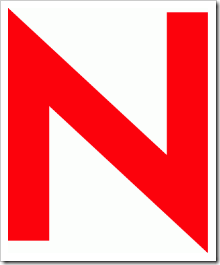 Novell is now part of Attachmate. Should you care? Yes.
Novell is now part of Attachmate. Should you care? Yes.
The deal closed on Wednesday, Apr. 27. “Novell, Inc., the leader in intelligent workload management, today announced that it has completed its previously announced merger, whereby Attachmate Corporation acquired Novell for $6.10 per share in cash. Novell is now a wholly owned subsidiary of The Attachmate Group, the parent company of Attachmate Corporation. “
Novell means lots of different things to different people. To me, the word “Novell” will always followed by “NetWare,” just as surely as “Lotus” is followed by “1-2-3.” (Yes, Alan is a dinosaur.)
To its more contemporary followers, Novell means two big open-source projects: SUSE Linux and Mono, an open-source implementation of the Microsoft .NET Framework and Common Language Runtime.
There are lots of other Novell products, to be sure – ZENworks, data center management tools, GroupWise, etc. See the big long list at http://www.novell.com/products/.
However, the only two that truly matter, from the software development perspective at least, and SUSE Linux and Mono.
SUSE is one of the Big Two enterprise-class distributions, along with Red Hat. (There are oodles of consumer-facing distros, like Ubuntu.) When it came to running on large hardware, I’ve always considered SUSE to the de facto leader. Given that Attachmate serves the same large enterprise customer base, I’m confident that SUSE will continue to evolve as a strong platform.
Mono is a concern. First, I’m not sure if Mono has a sustainable business model – or that it even has a business model at all. Second, Microsoft was a key behind-the-scenes player in Attachmate’s acquisition of Novell – see my comments from last November. It’s not in Microsoft’s best interest for Mono to exist. After all, if you can run .NET applications on Linux, you’re not locked into buying Windows Server.
My prediction: Under Attachmate, SUSE will flourish, and Mono will wither. I expect Mono to suffer intentional neglect, rather than a bold stroke, until it weakens, loses relevance, and fades away.
This is a depressing thought. It’s almost as depressing as that Overstock.com purchased the naming rights to the stadium used by the Oakland A’s baseball team and the Oakland Raiders football team. The idea of visiting “Overstock.com Coliseum” is somewhat nauseating.




